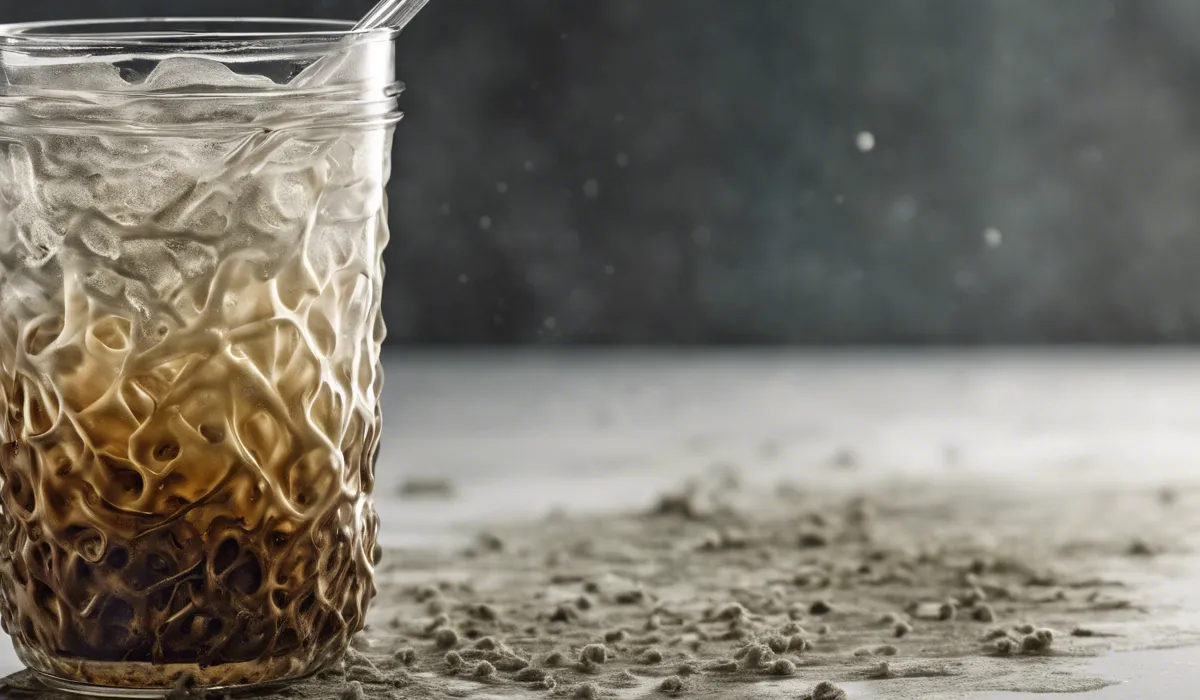Mold in a straw can potentially make you sick due to mold spores that can be inhaled or ingested, leading to respiratory issues or allergic reactions, especially in sensitive individuals.
Mold and Its Health Implications

What Is Mold?
Mold is a type of fungus that can grow almost anywhere there is moisture and organic material.
It reproduces by releasing tiny spores that are invisible to the naked eye. These spores can become airborne and settle on surfaces, leading to growth if conditions are right.
Household Mold Varieties
Common types of mold that may be found in homes include Aspergillus, Cladosporium, Penicillium, and Stachybotrys chartarum, often known as black mold. Each type can appear differently and can have various impacts on health and the home environment.
Conditions for Mold Growth
Mold thrives in damp, warm, and humid conditions. It often grows in places with water damage, high humidity, or poor ventilation, such as bathrooms, kitchens, and basements. Organic materials such as paper, wood, and fabric can serve as food sources for mold.
Health Risks from Mold Exposure
Exposure to mold can lead to respiratory issues, allergic reactions, and, in severe cases, neurological problems.
Symptoms might include sneezing, coughing, skin rashes, and headaches. Long-term exposure can exacerbate these conditions, especially in individuals with weakened immune systems.
Risks of Ingesting Mold
Eating or drinking mold can introduce toxins into the body, potentially leading to digestive issues or allergic reactions.
Some molds produce mycotoxins, which are particularly harmful if ingested and can contribute to serious health conditions.
Mold in Drinking Straws: Risks and Prevention

Development of Mold in Straws
Straws, especially reusable ones, can harbor mold if they are not cleaned properly. Leftover liquid and sugars from drinks can provide the perfect environment for mold to grow, undetected, inside the straw.
The Dangers of Moldy Straws
Using a straw that has mold can lead to the ingestion of mold spores. This can cause nausea, diarrhea, and vomiting, especially if the mold is toxic.
Inhaling spores from a moldy straw can also trigger asthma attacks or allergic reactions.
Symptoms of Ingesting Mold from Straws
After using a straw with mold, one might experience symptoms such as throat irritation, coughing, or gastrointestinal distress.
These symptoms can be more severe in individuals with mold allergies or compromised immune systems.
High-Risk Populations
Children, the elderly, and people with respiratory conditions or weakened immune systems are more susceptible to the effects of mold.
It is crucial to ensure their drinking utensils, including straws, are mold-free to prevent health complications.
Preventing Mold in Reusable Straws
Prevention is key when it comes to keeping reusable straws mold-free. Regular and thorough cleaning, immediate drying, and proper storage are essential steps to preventing mold growth.
Best Practices for Cleaning and Maintaining Straws

Cleaning Reusable Straws Step by Step
To clean a reusable straw, first rinse it under hot water to remove any visible residue. Next, use a straw cleaning brush with soap to scrub the interior thoroughly. Rinse again with hot water, ensuring all soap is removed.
For deep cleaning, soak the straw in a vinegar and water solution before the final rinse.
Tools and Solutions for Straw Cleaning
A dedicated straw cleaning brush is the most effective tool for cleaning the inside of a straw.
For cleaning solutions, mild dish soap or a mixture of vinegar and water are recommended. Avoid using harsh chemicals that might leave a residue or taste.
Importance of Drying Straws Completely
Moisture is mold’s best friend. After cleaning, ensure that straws are completely dry before storing them.
Air drying is effective, but using a towel to dry the inside can ensure that no moisture remains.
Alternative Straw Options
If maintaining reusable straws is a concern, consider alternatives like disposable paper straws or straws made from biodegradable materials. These can provide convenience while reducing the risk of mold exposure.
When to Replace Your Straws?
Reusable straws should be replaced if they show signs of wear, damage, or persistent stains that could harbor bacteria or mold. Consistent inspection will ensure that straws remain safe and hygienic for use.
FAQs About Mold in Straws
Can mold in a straw make you sick?
Yes, mold in a straw can potentially make you sick by inhaling or ingesting mold spores, which can cause respiratory issues or allergic reactions.
What symptoms can occur from using a moldy straw?
Symptoms from using a moldy straw can include coughing, sneezing, nasal congestion, throat irritation, and possibly allergic reactions in sensitive individuals.
How can you prevent mold from growing in straws?
To prevent mold from growing in straws, ensure they are thoroughly cleaned and dried after each use and stored in a dry environment.
Is it safe to reuse straws that have had mold in them?
It is not recommended to reuse straws that have had mold in them unless they have been properly cleaned and sterilized to remove all mold spores.
Are some people more at risk of getting sick from mold in a straw?
Yes, individuals with mold allergies, respiratory conditions such as asthma, or weakened immune systems are more at risk of getting sick from mold in a straw.
Final Thoughts
Mold found in straws can pose health risks, particularly for those with allergies or compromised respiratory systems.
The inhalation or ingestion of mold spores from a contaminated straw can lead to respiratory complications and allergic responses. Regularly inspecting and cleaning straws is important for preventing mold-related health issues.
